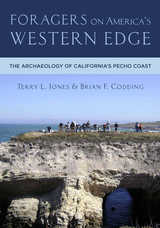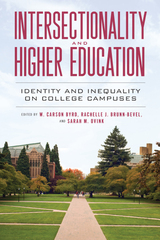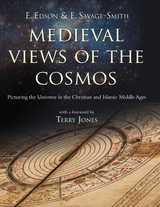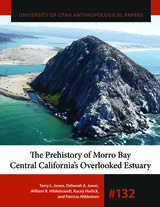5 books by Jones, Terry

Fantasy Travel
Vintage People on Photo Postcards
Tom Phillips
Bodleian Library Publishing, 2012
To celebrate the acquisition of the archive of distinguished artist Tom Phillips, the Bodleian Library asked the artist to assemble and design a series of books drawing on his themed collection of over 50,000 photographic postcards. These encompass the first half of the twentieth century, a period in which, thanks to the ever cheaper medium of photography, ordinary people could afford to own portraits of themselves. Each of the books in the series contains two hundred images chosen from a visually rich vein of social history. Their covers also feature thematically linked paintings, specially created for each title, from Phillips’s signature work, A Humument.
Fantasy Travel compiles postcards of people sitting playfully in studio mock-ups of airplanes, cars, speedboats, and hot air balloons. Such modes of travel were beyond the means of most people at the time, and photographic studios allowed them to indulge their flights of fancy—and take away the resulting postcard.
Each of these unique and visually stunning books give a rich glimpse of forgotten times and will be greatly valued by art and history lovers alike.
[more]

Foragers on America's Western Edge
The Archaeology of California's Pecho Coast
Terry L. Jones and Brian F. Codding
University of Utah Press, 2018
The California coastline has long been of interest to archaeologists. This book directs attention to the largely ignored Pecho Coast, a rugged, isolated, 20 km long peninsula between modern-day Morro Bay and Pismo Beach. Archaeological work along this stretch was last synthesized in 1972. Jones and Codding now bring together the extensive contract work and field school studies of the intervening years, shedding new light on the region’s early inhabitants.
The first people of the Pecho Coast were part-time residents who exploited shellfish, fish, and marine birds, including the flightless duck, Chendytes lawi, which sustained hunting drove to extinction ca. 2800 cal BP. This marked the only unequivocal case of prehistoric, human-caused extinction in western North America. Cold, productive seas allowed inhabitants to weather droughts of the Medieval Climatic Anomaly (950–600 cal BP), after which shell beads became increasingly abundant, representing either the initial appearance of Chumash-speaking peoples or attempts by Chumash leaders to consolidate power through gifting, reciprocal exchange, or forced conquest. During the mission era, fishing sustained the Native community as, for the first time, individuals became fully sedentary, foraging within a limited radius to avoid contact with the Spanish.
This record reveals a unique story of local adaptation, anthropogenic habitat change, social differentiation, and, ultimately, resistance to colonial invasion.
The first people of the Pecho Coast were part-time residents who exploited shellfish, fish, and marine birds, including the flightless duck, Chendytes lawi, which sustained hunting drove to extinction ca. 2800 cal BP. This marked the only unequivocal case of prehistoric, human-caused extinction in western North America. Cold, productive seas allowed inhabitants to weather droughts of the Medieval Climatic Anomaly (950–600 cal BP), after which shell beads became increasingly abundant, representing either the initial appearance of Chumash-speaking peoples or attempts by Chumash leaders to consolidate power through gifting, reciprocal exchange, or forced conquest. During the mission era, fishing sustained the Native community as, for the first time, individuals became fully sedentary, foraging within a limited radius to avoid contact with the Spanish.
This record reveals a unique story of local adaptation, anthropogenic habitat change, social differentiation, and, ultimately, resistance to colonial invasion.
[more]

Intersectionality and Higher Education
Identity and Inequality on College Campuses
W. Carson Byrd
Rutgers University Press, 2019
Though colleges and universities are arguably paying more attention to diversity and inclusion than ever before, to what extent do their efforts result in more socially just campuses? Intersectionality and Higher Education examines how race, ethnicity, class, gender, sexuality, sexual orientation, age, disability, nationality, and other identities connect to produce intersected campus experiences. Contributors look at both the individual and institutional perspectives on issues like campus climate, race, class, and gender disparities, LGBTQ student experiences, undergraduate versus graduate students, faculty and staff from varying socioeconomic backgrounds, students with disabilities, undocumented students, and the intersections of two or more of these topics. Taken together, this volume presents an evidence-backed vision of how the twenty-first century higher education landscape should evolve in order to meaningfully support all participants, reduce marginalization, and reach for equity and equality.
[more]

Medieval Views of the Cosmos
E. Edson and E. Savage-Smith
Bodleian Library Publishing, 2004
Once upon a time, the universe was much simpler: before our modern understanding of an infinite formless space scattered with pulsating stars, revolving planets, and mysterious black holes, the universe was seen as a rigid hierarchical system with the earth and the human race at its center. Medieval Views of the Cosmos investigates this worldview shared by medieval societies, revealing how their modes of thought affect us even today.
In the medieval world system—inherited by Christians and Muslims from the Greeks and Romans, and modified by their own religious tenets—spheres bearing the planets and stars wheeled around the earth, and at every level there was a moral lesson for humanity and a satisfying metaphor for the nature of God. The authors of this volume explain how the medieval view of the universe was harmonious on theological and practical levels, providing answers to the most puzzling of questions.
Medieval Views of the Cosmos is an engaging and beautifully illustrated introduction to a world where every moment was a theater of human drama directed by the hand of God.
In the medieval world system—inherited by Christians and Muslims from the Greeks and Romans, and modified by their own religious tenets—spheres bearing the planets and stars wheeled around the earth, and at every level there was a moral lesson for humanity and a satisfying metaphor for the nature of God. The authors of this volume explain how the medieval view of the universe was harmonious on theological and practical levels, providing answers to the most puzzling of questions.
Medieval Views of the Cosmos is an engaging and beautifully illustrated introduction to a world where every moment was a theater of human drama directed by the hand of God.
[more]

The Prehistory of Morro Bay
Central California's Overlooked Estuary
Edited by Terry L. Jones, Deborah A. Jones, William R. Hildebrandt, Kacey Hadick, and Patricia Mikkelsen
University of Utah Press, 2019
Morro Bay is one of more than thirty major estuaries where prehistoric people thrived along the California coast, yet for much of the twentieth century these systems were deemed insignificant within the broader outline of New World prehistory. Recent research, however, has shown that estuaries were magnets for human occupation as early as 10,000 years ago. This book combines archaeological data from large-scale excavations completed between 2003 and 2014 with other studies from Morro Bay to reveal a heretofore overlooked yet remarkable history of cultural change and adaptation. Over the last 8,000 years, as the bay evolved toward its current configuration, inhabitants endured earthquake and drought, regularly adjusting their settlement practices but continuing to fish and collect shellfish. Their populations slowly grew against a backdrop of extreme resource diversity and diachronic habitat variation, ultimately leaving behind evidence of a unique human-estuary ecological saga.
[more]
READERS
Browse our collection.
PUBLISHERS
See BiblioVault's publisher services.
STUDENT SERVICES
Files for college accessibility offices.
UChicago Accessibility Resources
home | accessibility | search | about | contact us
BiblioVault ® 2001 - 2024
The University of Chicago Press









